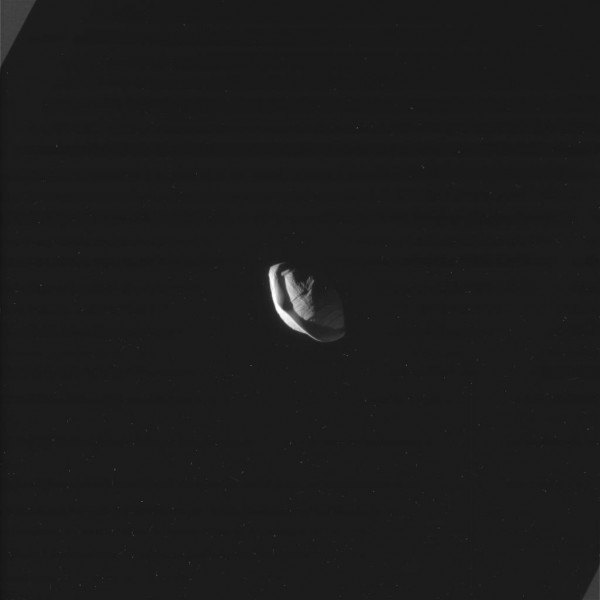By Ana Verayo, | March 11, 2017

This raw, unprocessed image of Saturn's moon Pan was taken by NASA's Cassini spacecraft. (NASA/JPL-Caltech/Space Science Institute)
NASA has revealed a unique look at Saturn's tiny moon, Pan, which appears to be shaped like a walnut or a ravioli. Thanks to new images captured by NASA's Cassini spacecraft, the moon has been put under the spotlight of the scientific community.
This moonlet measures around 20 miles across and appears more like a space rock than an actual moon. Pan is located within the Encke Gap which is a space between Saturn's ring system spanning 200 miles wide.
Like Us on Facebook
New images revealed by the NASA Cassini Saturn spacecraft show that Pan appears to possess a ring around this equatorial region which looks strikingly similar to a ravioli. The Cassini spacecraft is currently orbiting Saturn and studying its moons, which is also nearing the end of its mission after more than ten years.
Pan is Saturn's second innermost moon. It is also considered by scientists as a "ring sheperd" since it keeps the Encke Gap devoid of any rocks and particles. This occurs when Pan's gravitational forces sweep away these particles and disrupt their original orbits. This disruption is known as orbital resonance that can cause these gaps in Saturn's ring system by effectively "herding" smaller space rocks and particles scattered in Pan's orbital path.
These new images taken by the Cassini spacecraft this week was captured from a distance of 15,268 miles from its surface. NASA officials say that these images are the closest ones to date that will further help in studying Pan's shape and geology.
Pan developed this unusual shape that is characterized by a rocky ridge around its equator which is also officially called the accretionary equatorial bulge. This ridge can be clearly seen from the images which is apparently shaped by irregular gravitational forces that are pulling and tugging this moonlet.
Past studies suggested that this lunar bulge formation was created when rock particles fell from Saturn's ring and collided onto Pan's surface. This tiny moon is apparently not alone, as the Cassini spacecraft also captured images of Atlas, which is the closest moon to Saturn, located at the outer edge of the A ring.
-
Use of Coronavirus Pandemic Drones Raises Privacy Concerns: Drones Spread Fear, Local Officials Say

-
Coronavirus Hampers The Delivery Of Lockheed Martin F-35 Stealth Fighters For 2020

-
Instagram Speeds Up Plans to Add Account Memorialization Feature Due to COVID-19 Deaths

-
NASA: Perseverance Plans to Bring 'Mars Rock' to Earth in 2031

-
600 Dead And 3,000 In The Hospital as Iranians Believed Drinking High-Concentrations of Alcohol Can Cure The Coronavirus

-
600 Dead And 3,000 In The Hospital as Iranians Believed Drinking High-Concentrations of Alcohol Can Cure The Coronavirus

-
COVID-19: Doctors, Nurses Use Virtual Reality to Learn New Skills in Treating Coronavirus Patients







